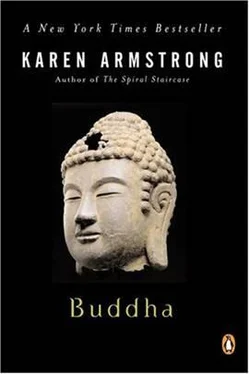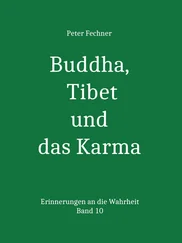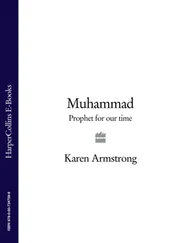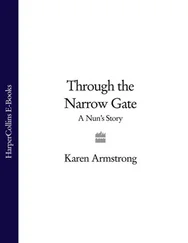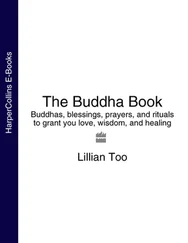The eighteenth-century Scottish empiricist David Hume came to a similar conclusion, but with an important difference: he did not expect his insight to affect the moral conduct of his readers. But in Axial Age India, knowledge had no significance unless it was found to be transformative. A dhamma was an imperative to action, and the doctrine of anatta was not an abstract philosophical proposition but required Buddhists to behave as though the ego did not exist. The ethical effects of this are far-reaching. Not only does the idea of “self” lead to unskillful thoughts about “me and mine” and inspire our selfish cravings; egotism can arguably be described as the source of all evil: an excessive attachment to the self can lead to envy or hatred of rivals, conceit, megalomania, pride, cruelty, and, when the self feels threatened, to violence and the destruction of others. Western people often regard the Buddha’s doctrine of anatta as nihilistic and depressing, but at their best all the great world religions formed during the Axial Age seek to curb the voracious, frightened ego that does so much harm. The Buddha, however, was more radical. His teaching of anatta did not seek to annihilate the self. He simply denied that the self had ever existed. It was a mistake to think of it as a constant reality. Any such misconception was a symptom of that ignorance which kept us bound to the cycle of suffering.
Anatta, like any Buddhist teaching, was not a philosophical doctrine but was primarily pragmatic. Once a disciple had acquired, through yoga and mindfulness, a “direct” knowledge of anatta, he would be delivered from the pains and perils of egotism, which would become a logical impossibility. In the Axial countries, we have seen that people felt suddenly alone and lost in the world, in exile from Eden and the sacred dimension that gives life meaning and value. Much of their pain sprang from insecurity in a world of heightened individualism in the new market economy. The Buddha tried to make his bhikkhus see that they did not have a “self” that needed to be defended, inflated, flattered, cajoled and enhanced at the expense of others. Once a monk had become practiced in the discipline of mindfulness, he would see how ephemeral what we call the “self” really was. He would no longer introject his ego into these passing mental states and identify with them. He would learn to regard his desires, fears and cravings as remote phenomena that had little to do with him. Once he had attained this dispassion and equanimity, the Buddha explained to the five bhikkhus at the end of his Second Sermon, he would find that he was ripe for enlightenment. “His greed fades away, and once his cravings disappear, he experiences the release of his heart.” He had achieved his goal and could utter the same triumphant cry as the Buddha himself, when he had attained enlightenment. “The holy life has been lived out to its conclusion! What had to be done has been accomplished; there is nothing else to do!”
And, indeed, it was when they heard the Buddha explaining anatta that all five bhikkhus attained their full enlightenment and became Arahants. The texts tell us that this teaching filled their hearts with joy. This might seem strange: why should they be so happy to hear that the self that we all cherish does not exist? The Buddha knew that anatta could be frightening. An outsider, hearing the doctrine for the first time, might panic, thinking: “I am going to be annihilated and destroyed; I will no longer exist!” But the Pali texts show that people accepted anatta with enormous relief and delight, as the five bhikkhus did, and this, as it were, “proved” that it was true. When people lived as though the ego did not exist, they found that they were happier. They experienced the same kind of enlargement of being as came from a practice of the “immeasurables,” which were designed to dethrone the self from the center of our private universe and put other beings in its place. Egotism is constricting; when we see things only from a selfish point of view, our vision is limited. To live beyond the reach of greed, hatred, and the fears that come with an acute anxiety about our status and survival is liberating. Anatta may sound bleak when proposed as an abstract idea, but when it was lived out it transformed people’s lives. By living as though they had no self, people found that they had conquered their egotism and felt a great deal better. By understanding anatta with the “direct knowledge” of a yogin, they found that they had crossed over into a richer, fuller existence. Anatta must, therefore, tell us something true about the human condition, even though we cannot prove empirically that the self does not exist.
The Buddha believed that a selfless life would introduce men and women to Nibbana. Monotheists would say that it would bring them into the presence of God. But the Buddha found the notion of a personalized deity too limiting, because it suggested that the supreme Truth was only another being. Nibbana was neither a personality nor a place like Heaven. The Buddha always denied the existence of any absolute principle or Supreme Being, since this could be another thing to cling to, another fetter and impediment to enlightenment. Like the doctrine of the Self, the notion of God can also be used to prop up and inflate the ego. The most sensitive monotheists in Judaism, Christianity and Islam would all be aware of this danger and would speak of God in ways that are reminiscent of the Buddha’s reticence about Nibbana. They would also insist that God was not another being, that our notion of “existence” was so limited that it was more accurate to say that God did not exist and that “he” was Nothing. But on a more popular level, it is certainly true that “God” is often reduced to an idol created in the image and likeness of “his” worshippers. If we imagine God to be a being like ourselves writ large, with likes and dislikes similar to our own, it is all too easy to make “him” endorse some of our most uncharitable, selfish and even lethal hopes, fears and prejudices. This limited God has thus contributed to some of the worst religious atrocities in history. The Buddha would have described belief in a deity who gives a seal of sacred approval to our own selves as “unskillful”: it could only embed the believer in the damaging and dangerous egotism that he or she was supposed to transcend. Enlightenment demands that we reject any such false prop. It seems that a “direct” yogic understanding of anatta was one of the chief ways in which the early Buddhists experienced Nibbana. And, indeed, the Axial Age faiths all insist in one way or another that we will only fulfil ourselves if we practice total self-abandonment. To go into religion to “get” something, such as a comfortable retirement in the afterlife, is to miss the point. The five bhikkhus who attained enlightenment in the Deer Park had understood this at a profound level.
Now they had to bring the Dhamma to others. As the Buddha himself had learned, an understanding of the First Noble Truth of dukkha meant empathizing with the sorrow of others; the doctrine of anatta implied that an enlightened person must live not for her- or himself but for others. There were now six Arahants, but they were still too few to bring light to a world engulfed in pain. Then, seemingly out of the blue, the Buddha’s little sangha got an influx of new members. The first was Yasa, the son of a rich merchant of Varanasi. Like the young Gotama he had lived in the lap of luxury, but one night he awoke to find his servants lying asleep all round his bed, looking so ugly and unseemly that he was filled with disgust. The fact that other texts, such as the Nidana Katha, would later, without apology, tell exactly the same tale about the young Gotama shows the archetypal nature of the story. It was a stylized way of describing the alienation that so many people in the Ganges region were experiencing. The Pali story tells us that Yasa felt sick at heart and that he cried in distress: “This is terrifying! Horrible!” The world seemed suddenly profane, meaningless and, therefore, unbearable. At once, Yasa decided to “Go Forth” and seek something better. He slipped on a pair of gold slippers, crept out of his father’s house, and made his way to the Deer Park, still muttering: “Terrifying! Horrible!” Then he came upon the Buddha, who had risen early and was enjoying a walk in the cool light of dawn. With the enhanced mental power of an enlightened man, the Buddha recognized Yasa, and motioned him to a seat, saying with a smile: “It is not terrifying; it is not horrible. Come and sit down, Yasa, and I will teach you the Dhamma.”
Читать дальше
